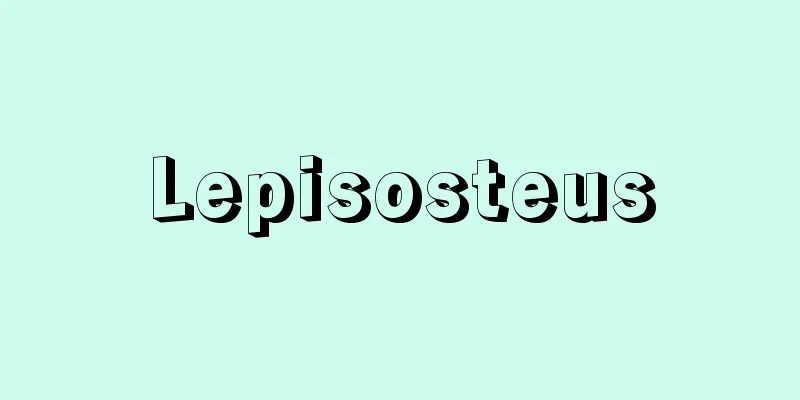General meeting of shareholders

Significance and typeIt is composed of shareholders with voting rights and is the highest decision-making body of a corporation, and is a necessary body. Because it is a conference body, it is not a permanent body, but is convened and held as an ordinary general meeting or an extraordinary general meeting. An ordinary general meeting is a general meeting held at a regular time every business year, and mainly involves approval of financial statements and the re-election of officers. An extraordinary general meeting is a general meeting that can be held at any time when necessary, for example, when there is a need to approve business restructuring or introduce takeover defense measures. [Shuzo Toda and Norihiko Fukuhara] authorityThe general shareholders meeting only decides the company's will internally and does not execute externally. Under the old Commercial Code, its authority was limited to matters stipulated in the Commercial Code and the articles of incorporation (Article 230-10 of the old Commercial Code). However, the Companies Act enacted in 2005 stipulates that the authority of a company with a board of directors is different from that of a company without a board of directors. [1] Companies without a board of directors The board of directors can make resolutions on all matters relating to a corporation (Article 295, Paragraph 1 of the Companies Act). The separation of ownership and management is not necessarily thorough, and as a result, the power of the general meeting is strong and the rights of shareholders are relatively strong. [2] Companies with a Board of Directors Limited to matters stipulated in the Companies Act or articles of incorporation (Article 295, paragraph 2 of the Companies Act). Because the decision-making authority for management is largely delegated to the established board of directors, the authority of the general shareholders' meeting remains limited, just as it was before the amendment. [Shuzo Toda and Norihiko Fukuhara] Convening[1] Decision In order to hold a general shareholders' meeting, the statutory convening procedure must be followed. In principle, the directors (or the board of directors in a company with a board of directors) decide on the meeting first (Article 298, Paragraphs 1 and 4 of the Companies Act), and the directors execute the decision (Article 296, Paragraph 3 of the same Act). A request to convene a general shareholders' meeting may also be made by minority shareholders (Article 297, Paragraph 4 of the same Act). [2] Notice of meeting In the case of a public company, the date, time, place, agenda, and if voting rights can be exercised in writing or by electromagnetic means (Article 298, Paragraph 2 of the same law) must be notified at least two weeks before the date of the meeting in a written or recorded form or by electromagnetic means (Article 299 of the same law). In the case of a private company, unless it has stipulated that voting rights can be exercised in writing or by electromagnetic means (in which case the same procedures and methods as for public companies are required), it is sufficient to give notice at least one week before the date of the meeting (Article 299, Paragraph 1 of the same law). Furthermore, if the company does not have a board of directors, the articles of incorporation may shorten the deadline for the notice of meeting from one week (Article 299, Paragraph 1 of the same law), there are no restrictions on the method of notice (oral or telephone notices are also acceptable), and the purpose of the meeting does not need to be written or recorded. [3] Place of convening: Any place is acceptable. However, if the place is too difficult to attend, it may be grounds for annulment of the general meeting resolution (Article 831, Paragraph 1, Item 1 of the same Act). [4] Documents to be provided when convening a meeting Companies with a board of directors are required to provide financial statements and business reports (Article 437 of the Companies Act). General shareholders meetings that adopt written or electronic voting and general shareholders meetings of companies with 1,000 or more shareholders with voting rights are required to provide voting forms, electronic means, and reference documents (Articles 301 and 302 of the Companies Act). It is also possible to use the web disclosure system and not send convening notices and reference documents (Articles 94 and 133, Paragraph 1 of the Enforcement Regulations of the Companies Act, Articles 161, Paragraph 4, and Article 162, Paragraph 4 of the Corporate Accounting Regulations). [5] Omission of convening procedures Except in cases where it has been stipulated that voting rights may be exercised in writing or by electromagnetic means, a general shareholders' meeting may be held without going through convening procedures if there is consent from all shareholders with voting rights (Article 300 of the Companies Act). If all shareholders with voting rights are in attendance, a general shareholders' meeting may be held without going through convening procedures. [Shuzo Toda and Norihiko Fukuhara] Resolution RequirementsThere are three types of resolution requirements for general shareholders meetings, based on the importance of the items to be resolved: [1] Ordinary resolutions When shareholders who hold shares equivalent to a majority of the voting rights of shareholders who can exercise voting rights are present (quorum), resolutions are made by a majority of the voting rights of the shareholders present (Article 309, Paragraph 1 of the Companies Act). The quorum can be changed in the articles of incorporation, but there are restrictions on the change in resolutions for the appointment and dismissal of directors, accounting advisors, and auditors, and the change cannot be made to less than one-third of the total voting rights of shareholders (Article 341 of the Companies Act). Statutory ordinary resolution matters include the appointment (Article 329) and dismissal (Article 339) of directors, etc., and the approval of financial statements (Article 438, Paragraph 2 of the Companies Act). [2] Special resolutions A resolution must be made by a majority of two-thirds of the voting rights of the shareholders present (quorum) (Article 309, Paragraph 2 of the Companies Act). The articles of incorporation can reduce the quorum to one-third of the voting rights, or the requirements can be increased. Statutory special resolution matters are set out in Articles 309, Paragraphs 1 to 12 of the Companies Act, and include preferential issuance of public shares to third parties, dismissal of auditors, and reorganization of the company. [3] Special resolutions These are more stringent methods of resolution than special resolutions. (1) A resolution made by more than half of the shareholders who can exercise their voting rights, and by a majority of at least two-thirds of the voting rights of the shareholders in question (Article 309, paragraph 3 of the same law. For example, changing the articles of incorporation to impose transfer restrictions on all shares). (2) A resolution made by more than half of all shareholders, and by a majority of at least three-quarters of the voting rights of the shareholders in question (Article 309, paragraph 4 of the same law. For example, in a private company, differences in the rights of shareholders are made based on their personal attributes). [Shuzo Toda and Norihiko Fukuhara] "Now You Can Understand! Everything About General Shareholder Meetings -- For First-Timers, by Jinkawa Kohei (2007, PHP Institute)" ▽ "How to Manage General Shareholder Meetings for Executives, by Nakamura Naoto (2007, Commercial Law Affairs)" ▽ "New Guidelines for General Shareholder Meetings, edited by the Corporate Law Department of the Tokyo Bar Association (2007, Commercial Law Affairs)" ▽ "Key Points in Stock Practical General Shareholder Meetings, edited by the Securities Agency Department of the Chuo Mitsui Trust and Banking Corporation, revised edition (2007, Zaikeishohosha)" [Reference] | | |Source: Shogakukan Encyclopedia Nipponica About Encyclopedia Nipponica Information | Legend |
意義・種類議決権を有する株主によって構成され、株式会社の最高意思決定機関であり必要的機関である。会議体の機関であるから、常置の機関ではなく、定時総会または臨時総会として招集され開催される。定時総会とは毎事業年度ごとに定時に開催される総会であり、おもに計算書類の承認、役員の改選などが行われる。臨時総会とは必要がある場合にいつでも開催することができる総会であり、たとえば、事業再編の承認、買収防衛策導入の必要がある場合に開催される。 [戸田修三・福原紀彦] 権限株主総会は会社内部において会社の意思を決定するだけで、対外的執行をなすものではない。その権限は、旧商法時代では商法および定款に定めた事項に限定されていた(旧商法230条ノ10)。しかし、2005年(平成17)制定の会社法においては、取締役会非設置会社と取締役会設置会社とではその権限が異なることとした。 〔1〕取締役会非設置会社 株式会社に関するいっさいの事項について決議することができる(会社法295条1項)。所有と経営の分離がかならずしも徹底しておらず、その結果、総会権限が大きく、株主の権利が相対的に強化されているからである。 〔2〕取締役会設置会社 会社法または定款に定めのある事項に限定されている(同法295条2項)。設置された取締役会に経営の意思決定権限を大幅に委譲しているため、株主総会の権限は改正前と同様に制限されているからである。 [戸田修三・福原紀彦] 招集〔1〕決定 株主総会が開催されるには、法定の招集手続を経る必要がある。まず、原則として取締役(取締役会設置会社では取締役会)が決定し(会社法298条1項・4項)、取締役が執行する(同法296条3項)。少数株主によって招集請求がなされることもある(同法297条4項)。 〔2〕招集通知 公開会社の場合には、会日の2週間前までに、総会の日時・場所・議題・書面または電磁的方法による議決権行使を可能とする場合にはその旨(同法298条2項)等を、記載または記録した書面または電磁的方法によって通知しなければならない(同法299条)。非公開会社の場合には、書面または電磁的方法による議決権行使を可能とする旨を定めた場合を除き(この場合には公開会社と同様の手続・方法を要する)、会日の1週間前までに通知を発すれば足りる(同法299条1項)。さらに、その会社が取締役会非設置会社であれば、定款でもって招集通知の期限を1週間より短縮することができ(同法299条1項)、通知の方法に制限はなく(口頭や電話等でもよい)、会議の目的事項の記載または記録を要しない。 〔3〕招集地 どこでもよい。ただし、あまりにも出席しにくい場所にすると、総会決議取消事由にもなりうる(同法831条1項1号)。 〔4〕招集の際の提供書類 取締役会設置会社では、計算書類および事業報告の提供を要する(同法437条)。書面投票・電子投票を採用する株主総会と、議決権を有する株主数が1000人以上の会社の株主総会では、議決権行使書面・電磁的手段および参考書類の交付を要する(同法301条、302条)。ウェブ開示制度を利用し、招集通知と参考書類を送付しないこともできる(会社法施行規則94条・133条1項、会社計算規則161条4項・162条4項)。 〔5〕招集手続の省略 書面または電磁的方法による議決権行使ができる旨定めた場合を除き、議決権を有する株主全員の同意があるときは、招集手続を省略して株主総会を開催することもできる(会社法300条)。議決権を有する株主全員が出席する場合には、招集手続を経ていなくても株主総会を開催することができる。 [戸田修三・福原紀彦] 決議要件株主総会の決議要件は、決議事項の重要性に照らし、次の3種類がある。 〔1〕普通決議 議決権を行使することができる株主の議決権の過半数にあたる株式を有する株主が出席し(定足数)、その出席株主の議決権の過半数をもって決する(会社法309条1項)。定足数は定款で変更できるが、その変更は、取締役・会計参与・監査役の選解任決議では制約があり、総株主の議決権の3分の1未満とすることはできない(同法341条)。法定の普通決議事項としては、取締役等の選任(同法329条)・解任(同法339条)、計算書類の承認(同法438条2項)などである。 〔2〕特別決議 議決権を行使することができる株主の議決権の過半数にあたる株式を有する株主が出席し(定足数)、その出席株主の議決権の3分の2以上にあたる多数をもって決する(同法309条2項)。定款により定足数は議決権の3分の1までは軽減することができ、また、要件を加重することもできる。法定の特別決議事項としては、会社法309条1号から12号において定められており、第三者に対する募集株式有利発行、監査役の解任、会社の組織変更行為などである。 〔3〕特殊の決議 特別決議よりもさらに厳重な決議方法である。(1)議決権を行使することができる株主の半数以上であって、当該株主の議決権の3分の2以上の多数をもってなす決議(同法309条3項。たとえば、全株式に譲渡制限を付するための定款変更)。(2)総株主の半数以上であって、当該株主の議決権の4分の3以上の多数をもってなす決議(同法309条4項。たとえば、非公開会社で株主の人的属性に基づいて権利内容に差を設ける場合)。 [戸田修三・福原紀彦] 『陣川公平著『これならわかる!「株主総会」のすべて――はじめて行く人のための』(2007・PHP研究所)』▽『中村直人著『役員のための株主総会運営法』(2007・商事法務)』▽『東京弁護士会会社法部編『新 株主総会ガイドライン』(2007・商事法務)』▽『中央三井信託銀行証券代行部編『株式実務株主総会のポイント』全訂版(2007・財経詳報社)』 [参照項目] | | |出典 小学館 日本大百科全書(ニッポニカ)日本大百科全書(ニッポニカ)について 情報 | 凡例 |
<<: Register of members; share register; Aktienbuch
Recommend
The Engi Era
During the Heian period, the Engi era ( 901-923 ) ...
Humus
Humus is a dark, amorphous organic matter inheren...
Triticum dicoccum (English name) Triticum dicoccum
…[Tsuneo Nakajima]. … *Some of the terminology th...
Nerima
One of Tokyo's 23 wards. Located on the Musash...
South polar skua (Stercorarius maccormicki)
Charadriiformes, family Laridae. Total length 50-5...
Levite (English spelling) lewīyyīm (Hebrew)
They are also called the Levites. A priestly fami...
Strategos (English spelling)
In Greek, it means "general." In 5th cen...
Dog nails - Inukugi
A nail that secures rails to sleepers, prevents ra...
Somatiker
...Therefore, this school of thought is sometimes...
McClung
Canadian author and women's liberation movemen...
Shellfish - Shellfish
...The oldest printed version is "Haikai-go&...
Yoshimichi Onodera - Yoshimichi Onodera
Year of death: Unknown (Year of death unknown) Yea...
The Humiliation of Canossa - The Humiliation of Canossa
This was a conflict between Holy Roman Emperor Hen...
Sir Edward Frankland
British chemist. Born in Churchtown, Lancashire. ...
Sale
A secondary offering is an offer to sell or a soli...





![Akita [city] - Akita](/upload/images/67cad15990ad7.webp)



